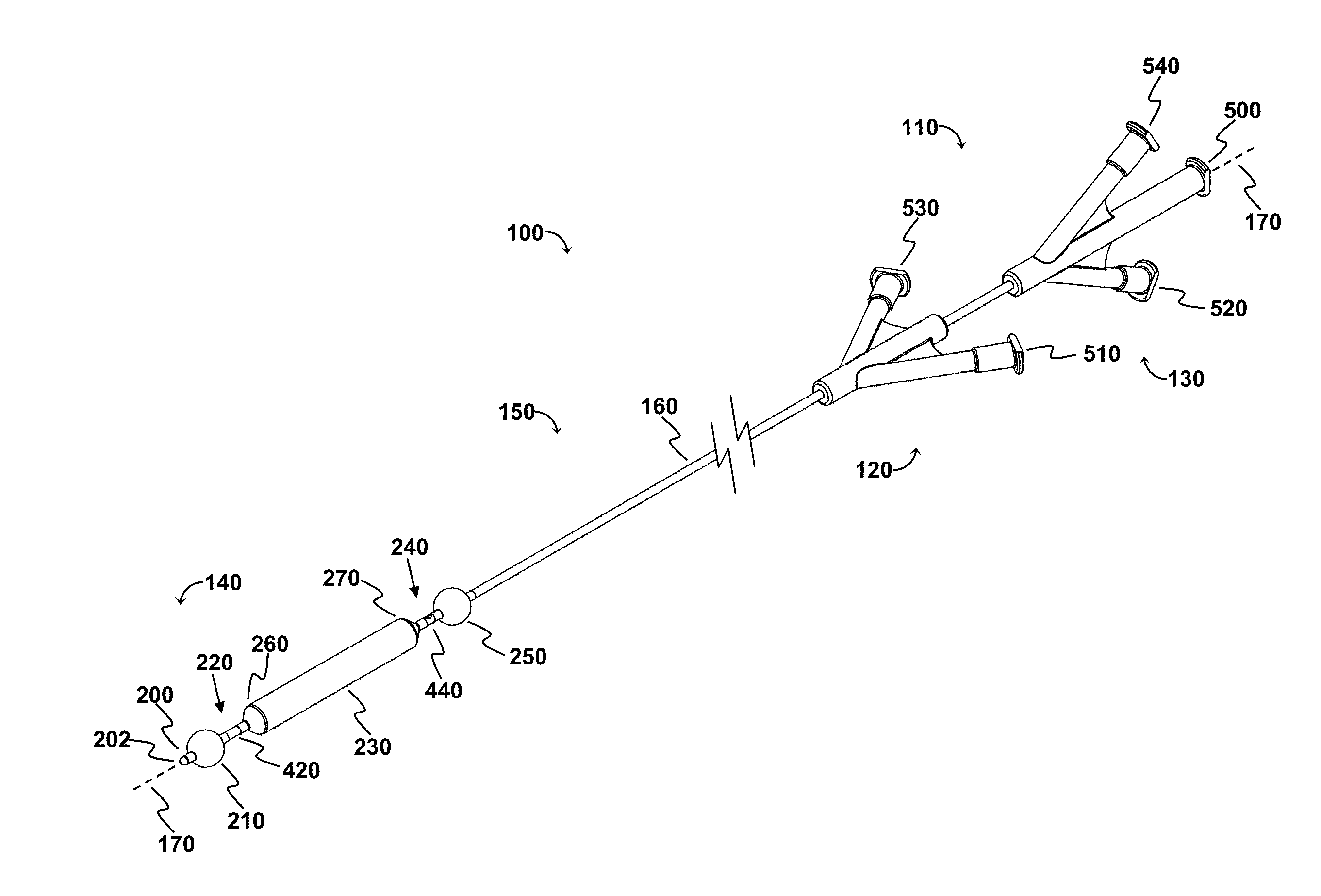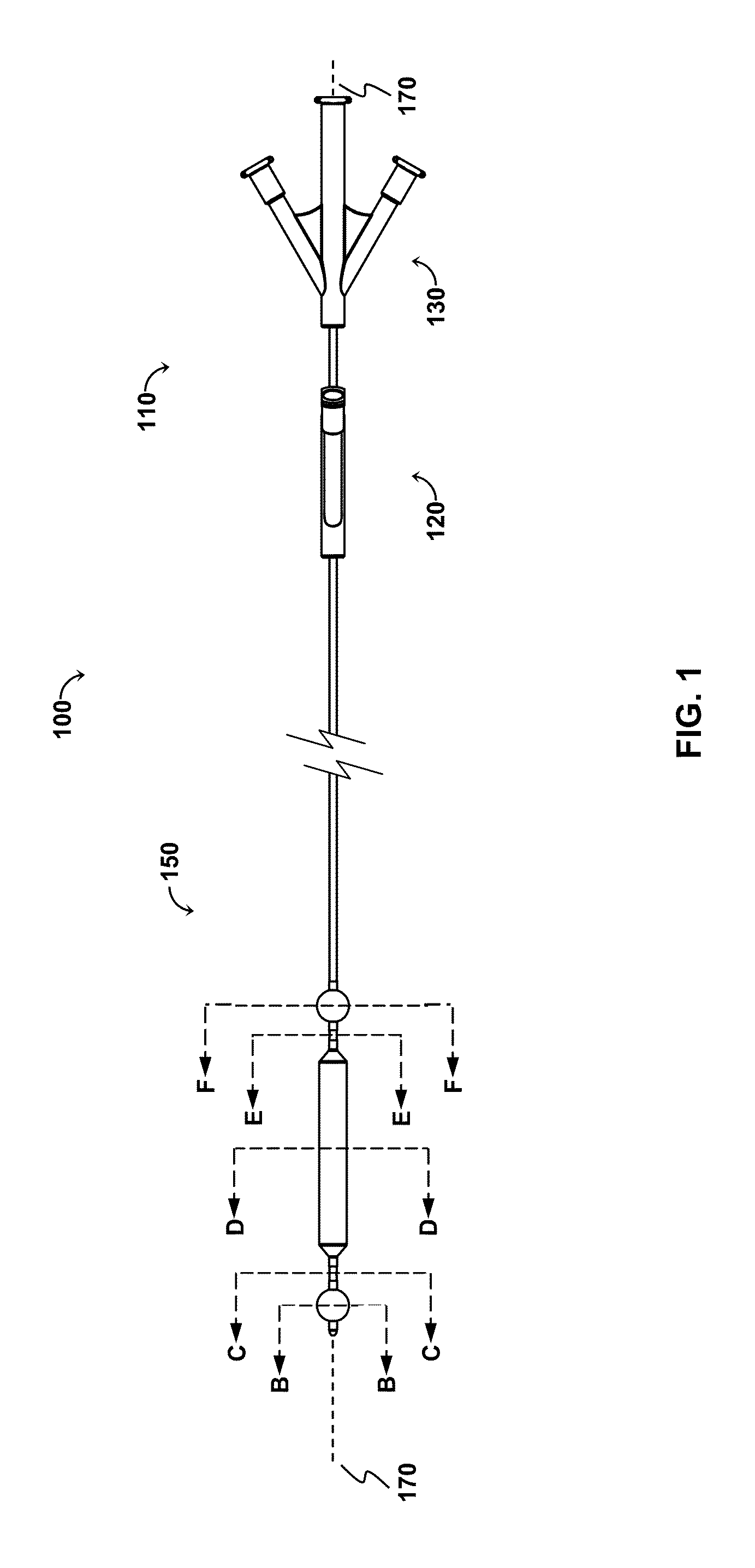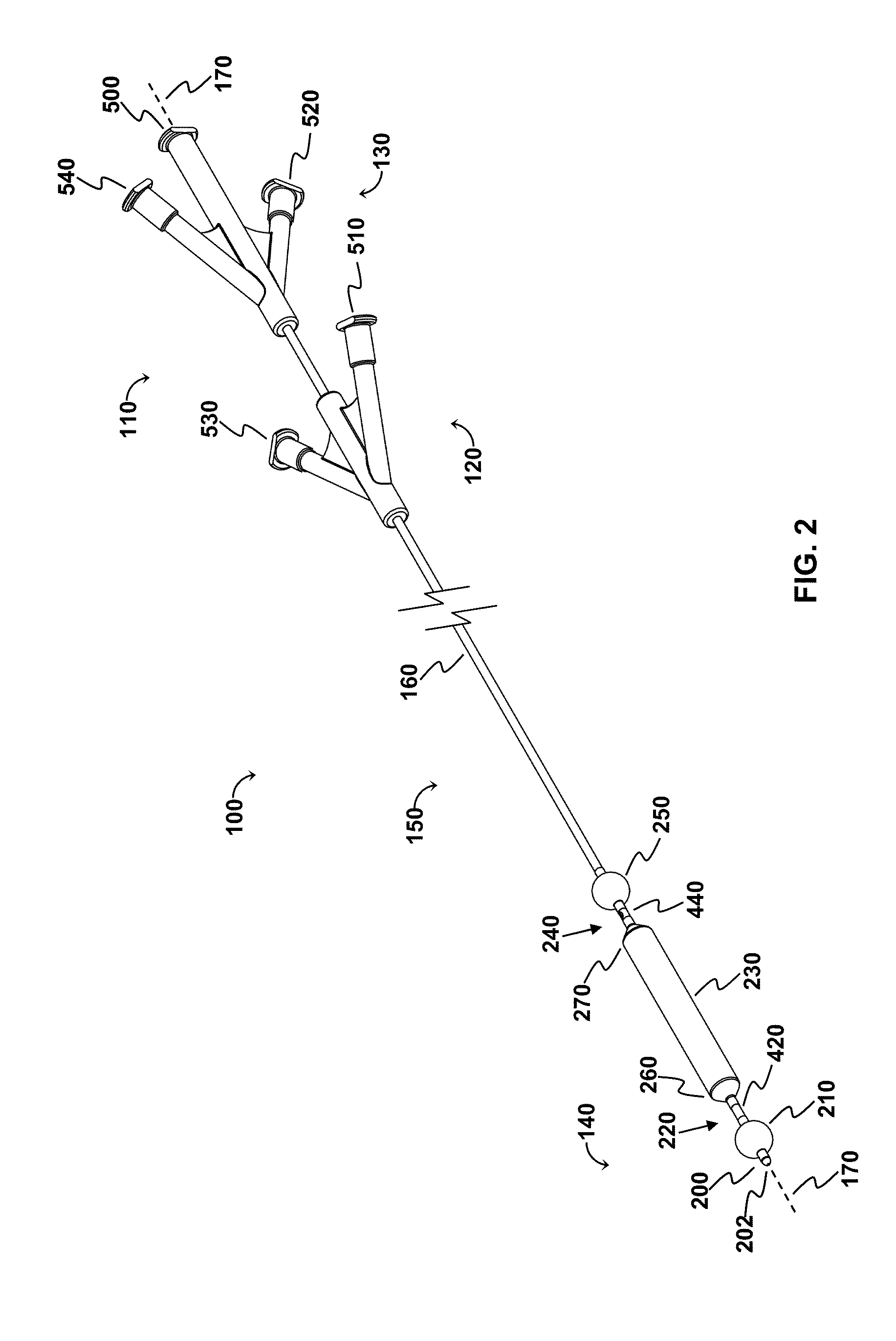Occlusion Perfusion Catheter
a perfusion catheter and occlusion technology, applied in the field of catheters, can solve the problems of insufficient treatment of prior art devices, inability to address most or all of them, and proliferation and migration of muscle cells, and achieve the effect of improving visualization of the treatment region and minimizing the resting of the vessel
- Summary
- Abstract
- Description
- Claims
- Application Information
AI Technical Summary
Benefits of technology
Problems solved by technology
Method used
Image
Examples
example 1
[0112]General Steps for Using the OPC
[0113]The OPC would be delivered to the treatment site via a minimally invasive insertion technique, over a guidewire, to the treatment area, and the occlusion balloons (210, 250) inflated to isolate the treatment region. Blood and any other fluid trapped between the two inflated occlusion balloons (210, 250) would be aspirated from the treatment region, and the treatment region flushed with saline. The saline would then be aspirated from the treatment region, the space occupying balloon would be inflated, and the agent would be injected into the treatment region. As appropriate, the aspiration lumen could be controlled via the proximal two- or three-way stopcock or check valve to allow the agent to enter the treatment region and prevent the agent from exiting the treatment region prematurely, and further allow selected fluid pressures within the treatment region to be achieved. The space occupying balloon could be optionally deflated, partially,...
example 2
[0115]Simultaneous perfuse in / drain out (simultaneous exchange of fluids in the isolated volume).
[0116]The OPC would be delivered to the treatment site via a minimally invasive insertion technique, over a guidewire, and the occlusion balloons (210, 250) inflated to isolate the treatment region. The space occupying balloon (230) would be inflated to minimize the treatment volume, with the displaced blood draining out through the evacuation lumen (320). Saline could be used as a flushing agent, or the therapeutic agent could be directly injected in through the perfusion lumen (340), displacing the remainder of the blood. Once the treatment region (60) is filled with the therapeutic agent, a stopcock connected to the device (via the evacuation port (520) would be closed, allowing controlled pressure to be built-up in the treatment region with the continued injection of therapeutic agent, resulting in perfusion into the damaged area of the blood vessel / body lumen. Once treatment is comp...
example 3
[0117]Two-Part Polymeric Agent / Gel Treatment.
[0118]This modality allows polymerization at the treatment site. The OPC would be delivered to the treatment site via a minimally invasive insertion technique, over a guidewire, and the occlusion balloons (210, 250) inflated to isolate the treatment region. The space occupying balloon (230) would be inflated to minimize the treatment volume, with the displaced blood draining out through the evacuation lumen (320). The remainder of the blood is aspirated out through the evacuation lumen (320), creating a vacuum in the treatment region. A stopcock attached to the evacuation port (520) would be closed, maintaining the vacuum. Once the treatment region is under vacuum, a two part polymeric agent would be injected into the treatment region—part “A” goes in one port (the perfusion lumen (340) for example), while part “B” goes in through the other (the evacuation lumen (320) for example) so that polymerization takes place in the treatment region...
PUM
 Login to View More
Login to View More Abstract
Description
Claims
Application Information
 Login to View More
Login to View More - R&D
- Intellectual Property
- Life Sciences
- Materials
- Tech Scout
- Unparalleled Data Quality
- Higher Quality Content
- 60% Fewer Hallucinations
Browse by: Latest US Patents, China's latest patents, Technical Efficacy Thesaurus, Application Domain, Technology Topic, Popular Technical Reports.
© 2025 PatSnap. All rights reserved.Legal|Privacy policy|Modern Slavery Act Transparency Statement|Sitemap|About US| Contact US: help@patsnap.com



